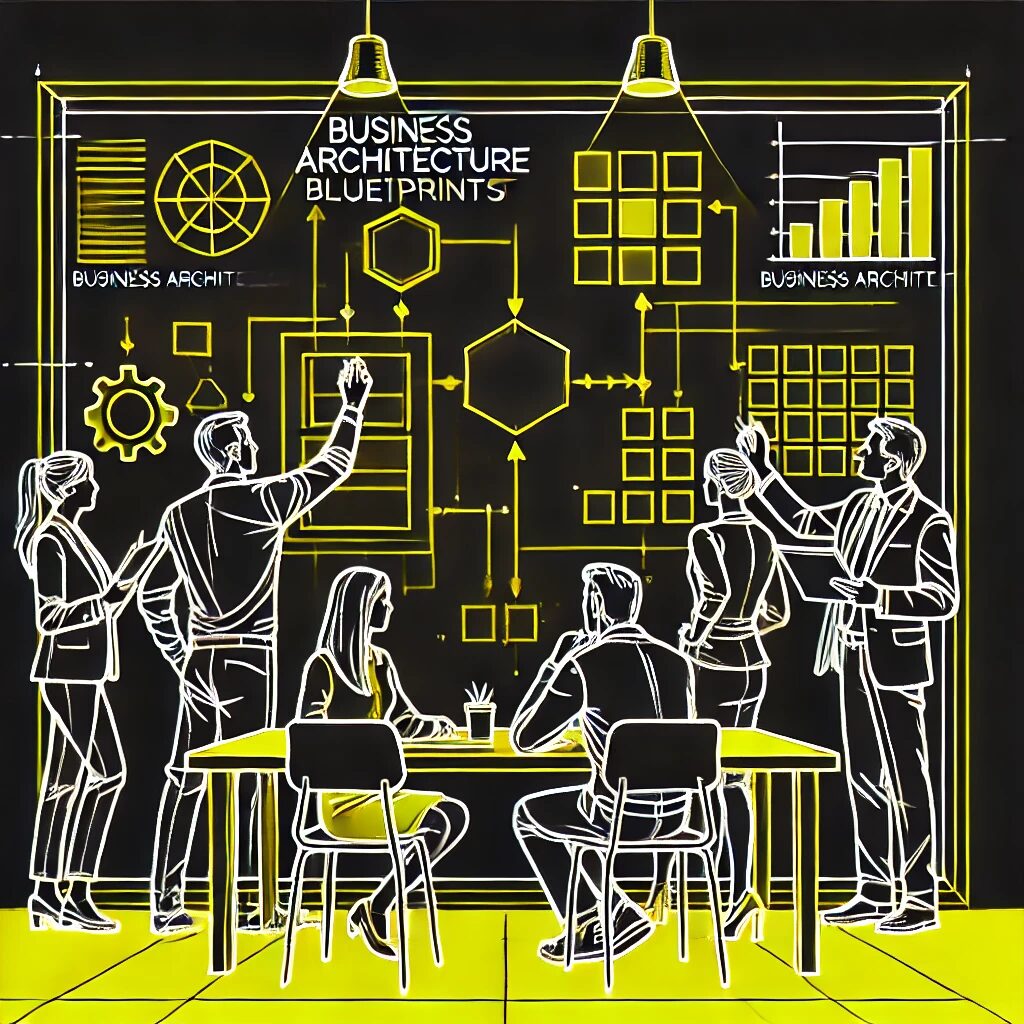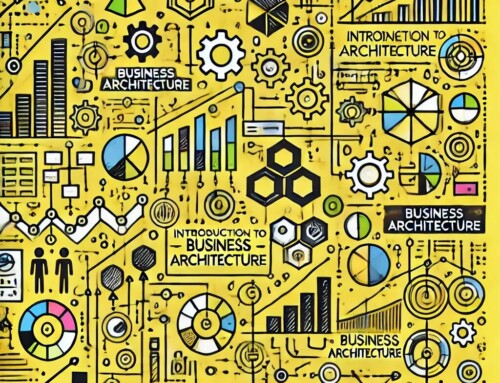
Enterprise Architecting Food Services and Restaurant Sector. From kitchen chaos to digital harmony – Enterprise Architecture as your transformation recipe.
The restaurant industry stands at a critical inflection point where digital capabilities no longer merely support the business – they fundamentally define competitive advantage. Technology is reshaping every aspect of the food service value chain from ghost kitchens and delivery apps to contactless payments and AI-driven demand forecasting.
Yet many restaurant enterprises approach digital transformation as a series of disconnected initiatives, leading to siloed systems, fragmented customer experiences, and unsustainable technology landscapes. Enterprise Architecture provides the crucial blueprint that connects strategic vision to operational execution, ensuring that digital investments create a coherent ecosystem rather than a patchwork of point solutions that increase complexity without delivering proportional value.
1: The Digital Restaurant Imperative
The food service industry faces unprecedented pressure to digitally transform while maintaining the personal touch that defines hospitality.
- Changing Consumer Expectations: Today’s diners expect seamless digital experiences across ordering, payment, loyalty, and personalization while still valuing the fundamental human connection of food service.
- Competitive Disruption: Digital-native concepts and third-party platforms are reshaping the competitive landscape, capturing market share through technology-enabled convenience and experience innovations.
- Operational Pressure: Rising costs for labor, ingredients, and real estate are driving the need for technology-enabled efficiency without compromising quality or experience.
- Data Opportunity: Restaurants have unprecedented access to customer, operational, and market data that—when properly leveraged—can drive competitive advantage through personalization and operational excellence.
2: The Enterprise Architecture Advantage
Enterprise Architecture provides the essential foundation for coherent transformation by connecting business strategy to execution through a comprehensive blueprint.
- Strategic Alignment: Enterprise Architecture ensures that technology investments directly support business strategy rather than creating solutions in search of problems.
- Integration Framework: A well-designed architectural blueprint enables seamless information flow across the restaurant ecosystem, from customer touchpoints to kitchen operations to supply chain.
- Technology Governance: Architecture establishes the standards, principles, and patterns that guide technology decisions, preventing fragmentation while enabling innovation.
- Digital Roadmapping: Architecture provides the framework for sequencing initiatives based on business priority, technical dependencies, and change capacity—turning vision into executable plans.
3: Restaurant Reference Architecture
A restaurant-specific reference architecture provides the blueprint for connecting customer experience with operational systems and business capabilities.
- Customer Engagement Layer: The architecture defines how websites, mobile apps, kiosks, social media, and third-party platforms interact with core systems to deliver consistent guest experiences.
- Restaurant Operations Core: The blueprint connects point-of-sale, kitchen management, inventory, and workforce systems to ensure seamless flow from order to fulfillment.
- Enterprise Backbone: The architecture establishes how finance, human resources, procurement, and analytics systems integrate to provide enterprise-wide visibility and control.
- Integration Fabric: The reference model defines the API strategy, event messaging, and data synchronization patterns that enable systems to work as a coherent ecosystem rather than isolated islands.
- Cloud Strategy: The architecture establishes a clear approach to leveraging cloud platforms for scalability, resilience, and innovation acceleration across the restaurant technology portfolio.
Do You Know
- Digital Revenue Impact: Restaurants with mature Enterprise Architecture practices achieve 28% higher revenue from digital channels compared to those with fragmented technology approaches. (Deloitte Restaurant Digital Maturity Index, 2023)
4: Current State Assessment
A comprehensive understanding of the existing technology landscape provides the foundation for transformation planning and gap analysis.
- Application Portfolio Inventory: Documenting current systems, their capabilities, technologies, life cycle status, and integration points reveals the starting point for transformation.
- Technical Debt Analysis: Evaluating aging systems, outdated technologies, and manual workarounds highlights risk areas and modernization priorities.
- Capability Mapping: Connecting business capabilities to supporting applications identifies gaps, redundancies, and misalignments between business needs and technology support.
- Data Architecture Assessment: Analyzing data silos, quality issues, and governance gaps reveals opportunities to create the integrated view needed for analytics and personalization.
- Architecture Pattern Analysis: Identifying prevalent architectural patterns across the portfolio—from monolithic legacy systems to modern microservices—informs the evolution strategy.
5: Customer Experience Architecture
A cohesive approach to customer-facing technologies ensures consistent experiences across all touchpoints while enabling continuous innovation.
- Omnichannel Foundation: The architecture establishes how customer identity, preferences, order history, and loyalty status flow seamlessly across channels from dine-in to delivery.
- Mobile Experience Strategy: Architectural decisions about native apps versus progressive web applications and integration with device capabilities like location services shape the mobile guest experience.
- Self-Service Framework: The blueprint defines how kiosks, QR code ordering, and mobile self-checkout integrate with core systems to provide frictionless self-service options.
- Personalization Engine: The architecture establishes how customer data platforms collect, unify, and activate guest information to power personalized recommendations and communications.
- Third-Party Integration: Architectural patterns for connecting with delivery platforms, reservation systems, and review sites ensure consistent experiences even when third parties are involved.
6: Kitchen Operations Architecture
Digital transformation of the heart of the restaurant—the kitchen—requires careful architecture to enhance efficiency without disrupting culinary excellence.
- Kitchen Display System Framework: The architecture defines how orders flow from point-of-sale and digital channels to kitchen stations with appropriate routing, timing, and prioritization.
- Recipe Management Platform: The blueprint establishes how digital recipe systems integrate with inventory, training, and production to ensure consistency across locations.
- Equipment Integration: Architectural approaches for connecting smart equipment—from programmable fryers to temperature monitoring systems—create the foundation for the Internet of Restaurant Things.
- Production Analytics: The architecture establishes how preparation time, quality metrics, and waste data flow to analytics systems that drive continuous kitchen optimization.
- Inventory Synchronization: The blueprint defines how production depletes inventory in real-time, triggering reordering and providing accurate availability information to customer-facing systems.
7: Data Architecture for Restaurant Intelligence
A comprehensive data architecture transforms restaurants from intuition-driven to insight-driven operations across all aspects of the business.
- Unified Data Platform: The architecture establishes how transaction, customer, operational, and financial data converge to create a complete picture of the business.
- Real-Time Analytics: The blueprint defines streaming data patterns that enable immediate operational insights for managers rather than retrospective reporting.
- Self-Service Analytics: Architectural decisions about data presentation tools and user interfaces determine how effectively managers can discover insights without relying on data specialists.
- Advanced Analytics Foundation: The architecture creates the data foundation for predictive capabilities like demand forecasting, staff scheduling optimization, and personalization algorithms.
- Data Governance Framework: The blueprint establishes ownership, quality standards, privacy controls, and lifecycle management for critical data assets across the restaurant enterprise.
A well-designed integration architecture enables the restaurant technology ecosystem to function as a coherent whole rather than disconnected parts.
- API Management Strategy: The architecture defines how APIs are designed, secured, managed, and evolved to enable flexible connections between systems while maintaining control.
- Event-Driven Patterns: The blueprint establishes event messaging approaches that allow real-time coordination between systems—from order placement to kitchen updates to delivery status.
- Legacy System Integration: Architectural patterns for connecting modern digital platforms with established operational systems ensure that transformation can proceed incrementally.
- Partner Ecosystem Framework: The architecture defines standardized approaches for integrating with suppliers, delivery services, payment processors, and other external partners.
- Integration Security: The blueprint establishes authentication, authorization, and data protection patterns that maintain security while enabling appropriate information flow.
9: Technology Modernization Approach
A pragmatic modernization strategy balances innovation with operational stability to enable transformation without disruption.
- Bimodal Architecture: The blueprint establishes differentiated approaches for stable, mission-critical systems versus fast-evolving digital innovation areas.
- Technical Debt Reduction: The architecture defines patterns for systematically addressing legacy systems, outdated technologies, and accumulated workarounds that limit agility.
- Cloud Migration Strategy: Architectural decisions about which workloads to move to cloud platforms—and which deployment models to use—shape the flexibility and economics of the technology estate.
- DevOps Enablement: The blueprint establishes the automation, tooling, and practices that accelerate software delivery while maintaining quality and compliance.
- Innovation Sandboxes: The architecture creates controlled environments for experimenting with emerging technologies like AI, IoT, and extended reality without risking core operations.
10: Multi-Location Architecture
Restaurants with multiple locations require special architectural considerations to balance standardization with local flexibility.
- Edge Computing Strategy: The architecture defines what processing occurs in individual restaurants versus centralized platforms to optimize for performance, resilience, and manageability.
- Offline Operation Capability: The blueprint establishes patterns for continuing critical operations during connectivity interruptions, a crucial consideration for geographically distributed locations.
- Configuration Management: Architectural approaches for managing location-specific settings—from menu variations to tax rules—enable consistency where appropriate while supporting necessary variation.
- Deployment Automation: The architecture establishes how software and configuration changes are tested and rolled out across locations to maintain consistency while minimizing risk.
- Local Compliance Framework: The blueprint defines how location-specific regulatory requirements for privacy, taxation, labor, and food safety are addressed while maintaining system coherence.
Do You Know
- Implementation Efficiency: Companies with established Enterprise Architecture capabilities deliver digital transformation initiatives 35% faster and 25% under budget compared to those without architectural governance. (McKinsey Digital Transformation Study, 2024)
11: Digital Security Architecture
A comprehensive security architecture protects the restaurant business while enabling the digital experiences that customers expect.
- Identity Framework: The architecture establishes consistent approaches for customer, employee, and system identity verification across all touchpoints and components.
- Data Protection Strategy: The blueprint defines classification, encryption, masking, and access control patterns for sensitive information from payment details to customer preferences.
- Compliance Architecture: Architectural patterns for addressing PCI, privacy regulations, and food safety compliance requirements ensure that digital initiatives don’t create regulatory risk.
- Security Monitoring: The architecture establishes visibility across customer-facing applications, operational systems, and infrastructure to detect and respond to potential threats.
- Resilience Planning: The blueprint defines backup, recovery, and business continuity approaches to ensure that digital systems can recover quickly from disruptions.
12: Enterprise Architecture Governance
Effective governance ensures that architecture drives transformation rather than becoming shelf-ware disconnected from decision-making.
- Architecture Review Process: Establishing streamlined approaches for evaluating initiatives against architectural standards balances governance with delivery speed.
- Exception Management: Creating clear processes for handling legitimate exceptions to architectural standards enables innovation while maintaining overall coherence.
- Pattern Library: Developing and maintaining reusable solution patterns accelerates implementation while ensuring consistency across the technology landscape.
- Technology Standards: Defining core technology choices for key architectural building blocks—from databases to front-end frameworks—reduces complexity while enabling innovation.
- Architecture Communication: Creating accessible visualizations and narratives that explain architecture to various stakeholders ensures that the blueprint guides actual decisions.
13: Implementation Roadmap
Translating architectural vision into executable plans requires a structured approach that balances ambition with pragmatism.
- Value-Driven Sequencing: Prioritizing initiatives based on business impact, technical dependencies, and implementation complexity ensures that transformation delivers incremental value.
- Foundation First: Establishing core architectural elements—like integration platforms and data foundations—before dependent capabilities ensures sustainable transformation.
- Capability Incrementalism: Building capabilities in minimum viable increments with clear business outcomes avoids the pitfalls of prolonged “big bang” implementations.
- Risk-Based Approach: Sequencing initiatives to address high-risk areas like end-of-life technologies or security vulnerabilities before they become critical issues.
- Change Capacity Alignment: Pacing implementation to match the organization’s ability to absorb change ensures that transformation is sustainable rather than overwhelming.
14: Organizational Enablement
Successful digital transformation requires organizational capabilities beyond technology—all enabled by Enterprise Architecture.
- Digital Leadership Development: Building executive understanding of technology possibilities and limitations creates more effective digital strategy and sponsorship.
- Architecture Capability Building: Developing architecture skills and roles within the organization ensures that the blueprint evolves with changing business needs.
- Cross-Functional Collaboration: Establishing forums and processes that connect technology teams with operations, marketing, finance, and other functions enables truly integrated solutions.
- Innovation Culture: Creating safe spaces for experimentation and learning accelerates the adoption of new capabilities while building organizational resilience.
- Partner Ecosystem Management: Developing structured approaches for selecting and managing technology partners ensures that external capabilities effectively extend internal resources.
Do You Know
- Operational Excellence: According to the Restaurant Technology Integration Index, food service organizations with well-architected technology ecosystems experience 42% fewer system outages and recover 64% faster when incidents do occur. (National Restaurant Association, 2023)
Takeaway
Enterprise Architecture provides the essential foundation for successful digital transformation in the food service industry by connecting strategic vision to execution through a comprehensive blueprint. By establishing clear patterns for customer experience, restaurant operations, data utilization, and technology modernization, architecture ensures that digital investments create a coherent ecosystem rather than a patchwork of point solutions. In an industry where margins are thin and competition is fierce, architecture-driven transformation enables restaurants to enhance guest experiences, improve operational efficiency, and build the organizational capabilities needed to thrive in an increasingly digital marketplace.
Next Steps
- Assess Your Current Architectural Maturity: Evaluate your existing technology landscape, integration patterns, and governance practices to identify strengths and improvement opportunities.
- Define Your Target Architecture: Develop a clear vision of your future technology ecosystem that aligns with your business strategy and provides a blueprint for transformation decisions.
- Establish Architectural Governance: Implement lightweight governance processes that ensure technology decisions align with your target architecture without creating bureaucratic barriers.
- Create Your Transformation Roadmap: Develop a sequenced plan for evolving from current to target architecture with clear business outcomes for each step.
- Build Architecture Capabilities: Invest in developing architecture skills and understanding across your organization to ensure that architectural thinking guides decisions at all levels.



